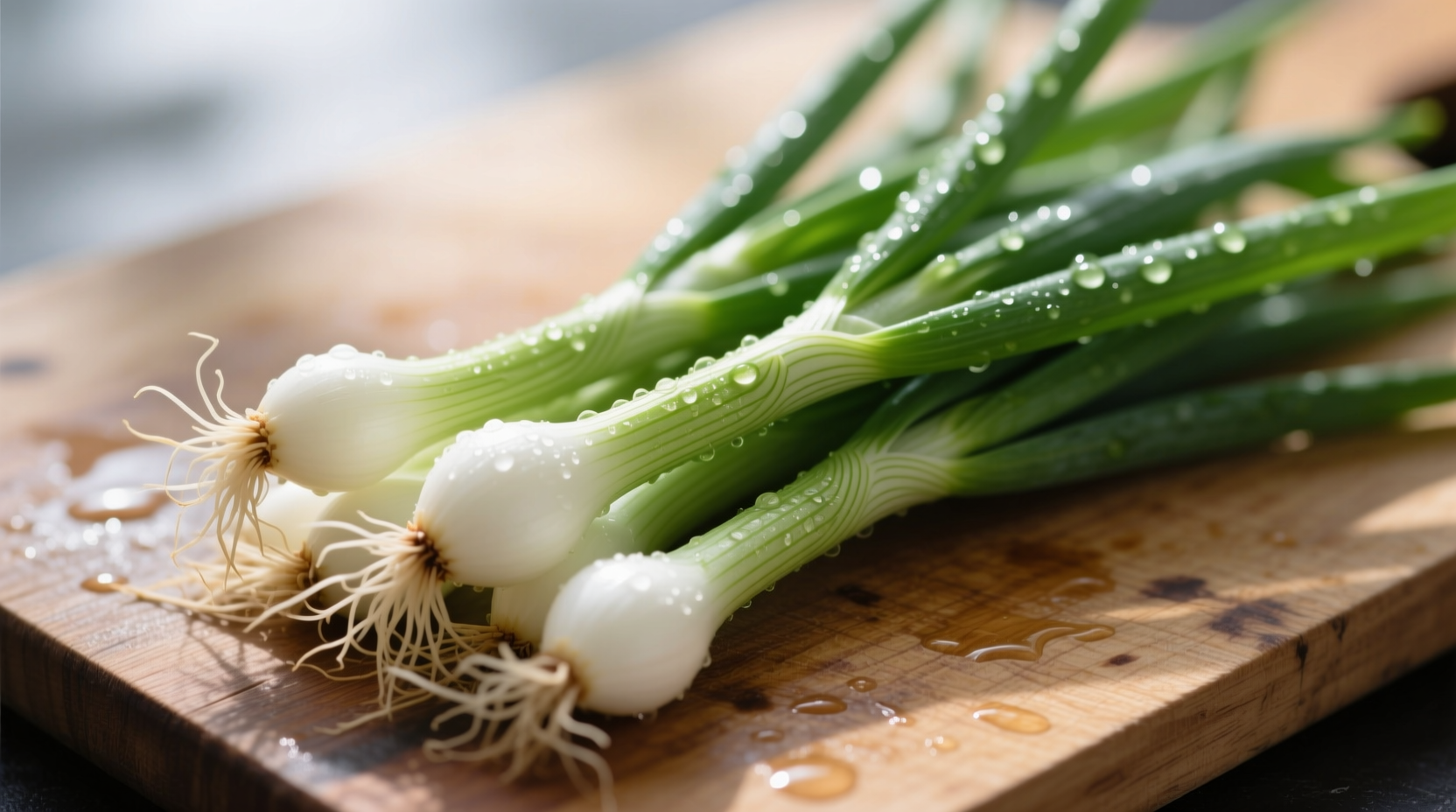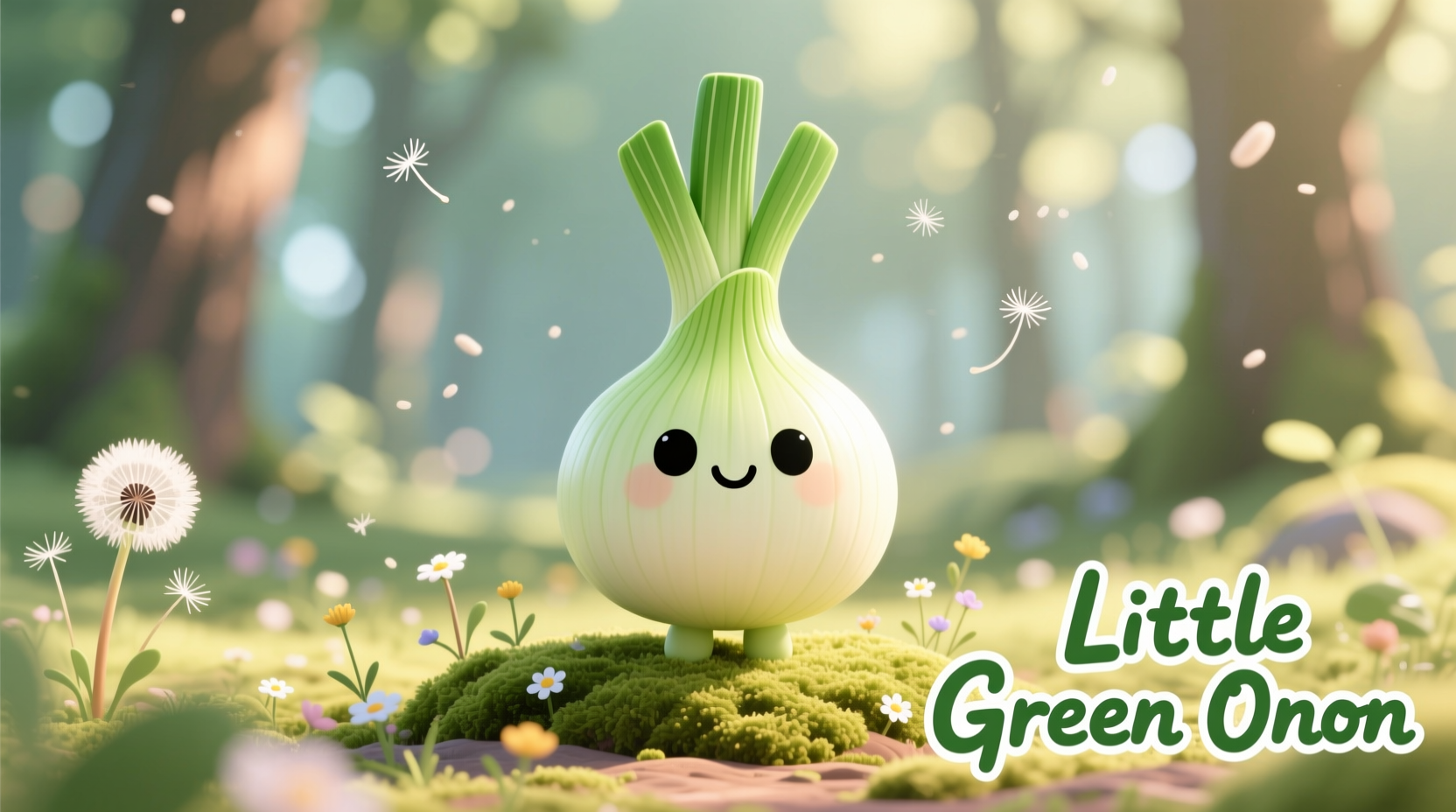Discover exactly what makes little green onions indispensable in your kitchen. This comprehensive guide reveals their unique characteristics, how they differ from similar ingredients, and practical techniques to maximize their flavor in everyday cooking. Whether you're a home cook or culinary enthusiast, you'll learn professional methods for selecting, storing, and using little green onions to elevate your dishes with authentic flavor.
What Exactly Are Little Green Onions?
Little green onions (Allium fistulosum) represent a specific variety of onion harvested at an early growth stage, before the bulb fully forms. Unlike mature onions that develop substantial bulbs, little green onions maintain a slender white base with long, hollow green leaves. Their flavor profile strikes a perfect balance between the sharpness of raw onions and the mildness of chives, making them versatile across numerous culinary applications.
These vegetables grow in temperate climates worldwide but have become particularly integral to East Asian cooking traditions. In Chinese cuisine, they're known as cong (葱) and appear in nearly every regional cooking style from Sichuan to Cantonese dishes. The entire plant is edible, with the white portion offering slightly stronger flavor than the green tops, allowing chefs to adjust intensity based on which part they use.
| Ingredient | Botanical Name | Bulb Development | Flavor Profile | Primary Culinary Use |
|---|---|---|---|---|
| Little Green Onion | Allium fistulosum | Minimal bulb formation | Mild, fresh onion flavor | Stir-fries, garnishes, dipping sauces |
| Scallion | Allium cepa var. cepa | Small but visible bulb | Slightly stronger onion taste | Salads, soups, raw applications |
| Chive | Allium schoenoprasum | No bulb formation | Delicate, grassy flavor | Garnishes, egg dishes, cream sauces |
| Shallot | Allium cepa var. aggregatum | Distinct clustered bulbs | Sweet, mild, complex flavor | Vinaigrettes, reductions, delicate sauces |
Little Green Onions Through Culinary History
Little green onions have played significant roles in culinary traditions for centuries. Their cultivation timeline reveals fascinating cultural adoption patterns:
- 2600 BCE: Earliest recorded cultivation in ancient China during the Xia Dynasty
- 500 BCE: Spread along Silk Road trade routes to Central Asia
- 1500s: Introduced to Europe through Asian trade connections
- 1800s: Brought to North America by Chinese immigrants working on railroads
- 1970s-Present: Global popularity surge with increased interest in Asian cuisines
According to research from the USDA National Institute of Food and Agriculture, little green onions remain among the top five most consumed allium varieties worldwide, with China producing approximately 70% of global supply (nifa.usda.gov).
Practical Applications in Modern Cooking
Understanding when and how to use little green onions can transform your cooking. These versatile ingredients excel in specific applications while having clear limitations:
Optimal Usage Scenarios
- Stir-frying: Add white portions early for flavor base, green portions at the end for freshness
- Garnishing: Thinly sliced green portions add color and mild flavor to finished dishes
- Dipping sauces: Finely chopped in soy-vinegar mixtures for dumplings and spring rolls
- Scallion pancakes: Essential ingredient in the dough for Chinese cong you bing
When to Avoid Little Green Onions
- Long-simmered soups where their delicate flavor would dissipate
- Dishes requiring strong onion flavor (use mature onions instead)
- Raw applications where sharper onion flavor is desired
- When substituting for chives in delicate egg dishes
Selecting and Storing for Maximum Freshness
Professional chefs evaluate little green onions using these criteria:
- Vibrant color: Crisp white bases with bright green, unwilted tops
- Firm texture: No soft spots or slimy areas on the white portion
- Fresh aroma: Clean, mild onion scent without sour or fermented notes
- Root integrity: Small white roots still attached indicate recent harvest
For optimal storage, wrap unwashed little green onions in a slightly damp paper towel and place in a perforated plastic bag in your refrigerator's vegetable drawer. Properly stored, they'll maintain freshness for 7-10 days. Never wash them before storage as excess moisture accelerates spoilage.

Professional Preparation Techniques
Master these chef-recommended methods to maximize flavor from little green onions:
Cutting Methods for Different Applications
- Thin diagonal slices: For stir-fries and garnishes (¼ inch slices)
- Long julienne strips: For scallion pancakes and wraps (2-3 inch lengths)
- Finely minced: For dipping sauces and dressings
- Whole stalks: For grilling or roasting with other vegetables
Heat Application Principles
The white and green portions respond differently to heat. Add white bases first when cooking, as they require slightly longer to mellow their sharper flavor. Introduce green portions in the last 30-60 seconds of cooking to preserve their fresh flavor and vibrant color. For raw applications like garnishes, slice just before serving to prevent wilting.
Nutritional Benefits Worth Noting
Little green onions offer more than just flavor. According to research from the Harvard T.H. Chan School of Public Health, they contain significant amounts of vitamin K (providing approximately 20% of daily value per serving), vitamin C, and antioxidants like allicin (hsph.harvard.edu/nutritionsource). These compounds support cardiovascular health and provide anti-inflammatory benefits without adding significant calories to your dishes.
Common Mistakes Home Cooks Make
Avoid these frequent errors that diminish the quality of your dishes:
- Mixing white and green portions indiscriminately: Treat them as separate ingredients with different cooking times
- Using dried or wilted specimens: Freshness directly impacts flavor quality
- Overcooking the green portions: They should retain some crispness and vibrant color
- Substituting mature onions: Their stronger flavor overwhelms delicate dishes
- Storing improperly: Moisture accelerates spoilage and flavor loss
Seasonal Availability and Growing Tips
While available year-round in most markets due to global supply chains, little green onions peak in spring and early summer. For home gardeners, they're among the easiest alliums to grow, requiring minimal space and thriving in containers. Plant seeds ¼ inch deep in well-draining soil, keeping consistently moist. Harvest when plants reach 6-8 inches tall, typically 60-80 days after planting. Successive plantings every 2-3 weeks ensure continuous harvest throughout the growing season.











 浙公网安备
33010002000092号
浙公网安备
33010002000092号 浙B2-20120091-4
浙B2-20120091-4